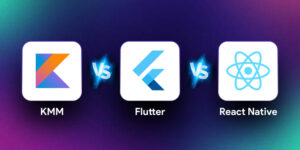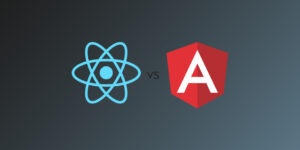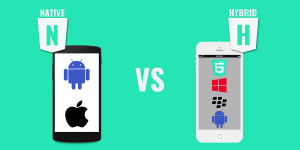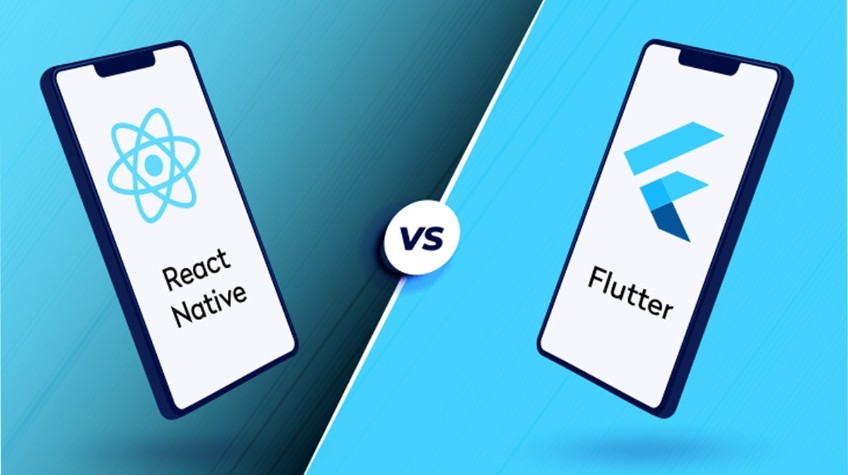
In 2025, mobile application development has evolved significantly. As the competition between Flutter vs React Native continues to heat up, developers are presented with an exciting choice of technology for developing native mobile apps with better user experience and a competitive edge in performance on different platforms, including iOS and Android.
Both technologies provide rapid app deployment solutions, but how do they measure against each other? This evaluation will help you decide which is better suited for your project: Flutter or React Native. From impressive UI capabilities to a comprehensive library of plugins, explore both sides thoroughly before deciding to choose one over another! This blog goes through Flutter Vs React Native: Which is better?
What is Flutter?
Flutter is an open-source mobile application development framework designed by Google. It uses a single codebase to design applications for both Android and iOS platforms, making it easier to create innovative apps with minimal coding effort. With its intuitive tools, customizable UI components, and built-in support for multiple programming languages such as Dart or JavaScript, Flutter makes developing responsive user interfaces fast & easy – regardless of the project’s complexity!
The Flutter framework also offers advanced features like integration with backend services (such as Firebase) & compatibility across all major browsers & devices. Whether you’re an experienced app developer or new to mobile design, integrating Flutter into your workflow will make creating new experiences truly enjoyable!
What is React Native?
React Native is an open-source, cross-platform mobile application development framework developed by Facebook to provide developers with a powerful toolkit for creating truly native apps. It allows users to write high-performance and efficient code that can run on both iOS and Android devices using the same underlying technology stack.
React Native simplifies the deployment process through its intuitive structure while providing access to all available device APIs, such as a gyroscope or GPS positioning, without requiring any extra integration effort from developers. With React Native, businesses gain better ROI on their app investments due to more robust features in shorter timeframes. This makes it excellent for startups looking for affordable solutions efficiently implemented across different platforms like iOS & Android.
History of Flutter and React Native
The history of Flutter and React Native is an interesting one. While both frameworks became popular around the same time, they have drastically different origins.
Google created Flutter in 2017 as a tool for developing cross-platform mobile apps quickly and easily with their own Material Design language. Since then, developers have adopted it widely due to its ease of use and flexibility when working with multiple operating systems like iOS, Android, web, or embedded devices.
It even supports Windows 10 now! And ever since being acquired by Alphabet Inc., they’ve also put more resources into ensuring that features are always up to date, guaranteeing that your codebase always remains updated even after how long ago you started writing code on this framework!
React Native, on the other hand, had rather humble beginnings as an open-source project from Facebook back in 2015, which meant improving user interface development within their internal teams while maintaining high-performance levels across all platforms, thus allowing them to scale projects faster without having to rewrite entire sections every time something changed such as device specs or core OS updates which tend happen quite often these days!
Over time though, React Native’s popularity began growing primarily thanks to hosting events dedicated solely towards developing & showcasing excellent applications using only a few lines of code – inspiring the rest of us to get involved too furthering the worldwide adoption rate each day, leading to where we find ourselves today: two most powerful toolsets available completely free of charge enabling anyone regardless experience level create truly unique products almost zero frontend costs associated any particular platform whatsoever meaning.
Pros and cons of Flutter
Pros
- Flutter is an open-source platform that allows developers to use a single codebase and create apps for both Android and iOS. This saves time, money, effort, and resources when developing applications.
- Flutter has extensive documentation, which makes it easy to understand how the framework works, as well as provides plenty of resources, including UI libraries, so you can quickly build custom UIs without having any coding knowledge at all.
- The development process with Flutter is relatively quick due to its hot reloading feature, which refreshes changes in real-time while keeping everything intact such as local data or state variables etc., saving tons of valuable working hours each day.
Cons
- Since some functionality requires device-specific features like GPS location etc., native solutions are better suited sometimes than using Flutter for specific programs requiring this type of integration.
- Limited third-party support means there may be fewer options out there from external sources if more specialized app elements need to be integrated into your product.
RELATED: React JS vs Angular JS: The Better Option for IoT Product Development
Features of Flutter
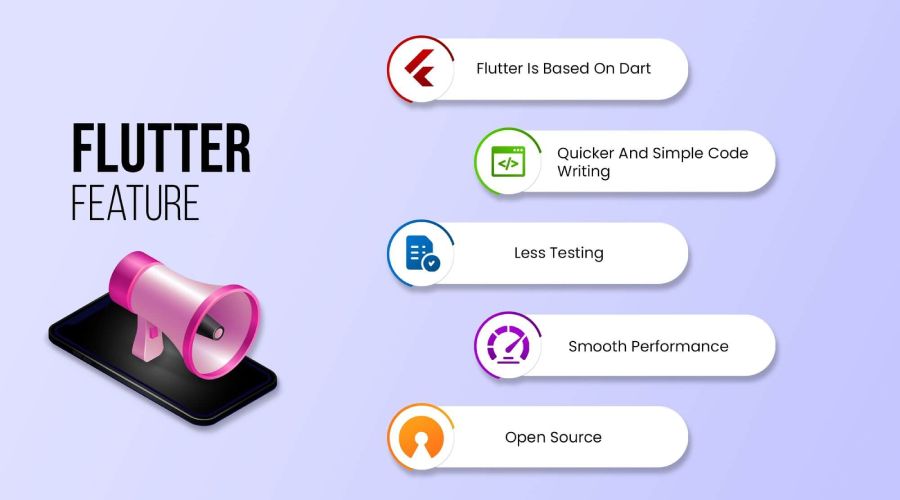
- Flutter is an open-source, cross-platform software development toolkit that helps developers build native UI applications faster and more efficiently.
- It allows for greater flexibility than traditional mobile app frameworks by allowing you to develop code once and run it on multiple platforms.
- Its key features include a reactive framework, a Hot Reloading feature, which lets developers quickly change the code of apps in real-time, customizable widgets with rich animation support, etc.
- Stateful hot reloads let you make changes while the application is running with no need to restart or lose any progress made previously within seconds.
- Flutter offers integration with Firebase plugins such as ML Kit (for use cases including vision processing), Cloud Functions(serverless computing), analytics services like Google Analytics & performance monitoring tools, Crashlytics & App Performance Monitoring Services from Firebase Platform, all these helping teams increase their developer speed drastically without compromising quality.
Pros and cons of React Native
Pros
- Significantly reduces development time and cost for mobile app projects due to using JavaScript.
- Produces a unified interface across multiple devices with its “once learn, anywhere write” approach.
- Enables easy integration with existing native apps without extensive knowledge of different languages like Java or Objective C.
- Offers powerful debugging tools which help boost performance through hot reloading and instant feedback during coding & testing phases.
Cons
- Newer APIs might be unreliable until they reach a certain level of maturity, as it is a constantly evolving platform that could cause difficulties while developing new features.
- Compatibility issues may occur when integrating 3rd party libraries into an application written using this framework.
- Certain complex use cases require writing additional codes on both platforms, Android & iOS, separately rather than sharing them between the two platforms, which can result in more complexity overall from a maintenance perspective.
Features of React Native
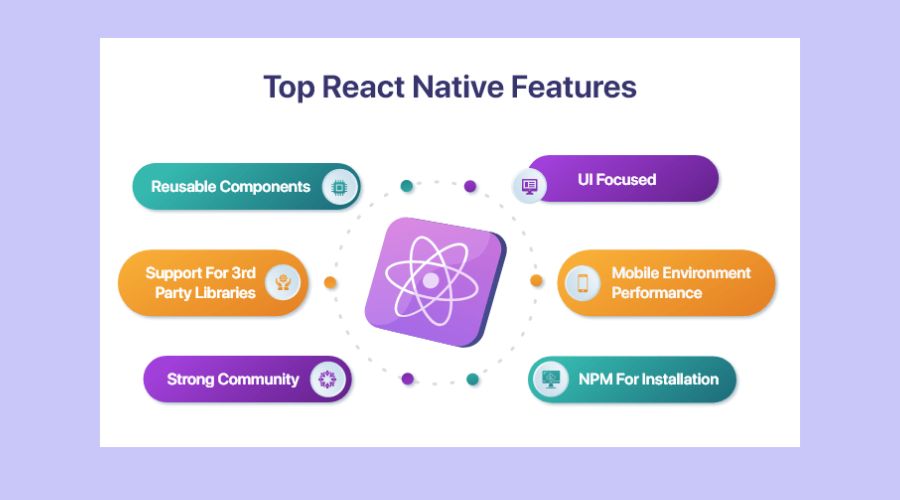
- React Native: the fastest, most efficient way to develop cross-platform mobile applications
- Leverages native components for a more intuitive user experience and improved app performance
- Identical codebase across iOS and Android platforms allows faster development cycles with fewer bugs
- Live reloading of changes that can be tested on simulators/simulated devices without having to recompile each time
- Easy access to APIs from both the device’s platform as well as third-party services such as Google Maps
- Write apps in JavaScript, giving developers flexibility along with their existing skill set knowledge
- Decoupled architecture reduces build times by eliminating unnecessary dependencies
- Support dynamic updates so there is no need to resubmit updated versions of your application
Flutter Vs React Native
1. Language
- Flutter is a cross-platform mobile development solution that uses the Dart programming language, while React Native relies on JavaScript.
- Flutter has its own UI components, design interface elements, and direct access to native subsystems like a camera or 3D graphics acceleration for users needing more functionality than traditional web apps provide.
- By contrast, React Native builds upon existing Android/iOS frameworks for user interfaces such as Cocoa Touch (iOS) or Material Design (Android).
- In terms Of code reusability between platforms, both technologies offer complete cross-platform solutions or a hybrid approach with platform-specific customizations where needed.
- One advantage of Flutter compared to React Native is faster build times due to improved Hot Reloading features, allowing developers to preview changes quickly without running an entire app from scratch each time.
2. User Interface
- Flutter enables developers to create native apps for both Android and iOS platforms simultaneously with the same codebase.
- React Native, on the other hand, allows developers to utilize components of specific OSs, such as buttons or menus while leveraging JavaScript interaction.
- Flutter offers fast app performance owing to its ahead-of-time (AOT) compilation feature that precompiles codes into machine language code before execution within an application framework.
- With React Native, hot reloading accelerates development cycles considerably through quick implementation & preview options without affecting existing state data.
- UI elements developed using Dart programming language run faster than those constructed by Javascript present inside RN applications due to their presence of already compiled AOT format during runtime service activation phases.
- Additionally, Flutters’ customizable Widget library creates robust UIs slightly quicker when compared against JSX features from RM but may lack behind regarding available toolkit size selection parameters present inside it
3. Performance
- Flutter is a robust framework that helps in creating high-performance applications. React Native also offers similar performance but requires more effort than Flutter.
- Flutter uses Dart programming language, which compiles into native code with minimal overhead and better overall output for the application. React Native, on the other hand, chooses JavaScript as its core language but sometimes struggles when dealing with heavy computations due to a lack of optimization tools available in comparison to those present within the dart ecosystem used by Flutter.
- When comparing user experience between both Frameworks, Flutter’s hot reload feature allows developers quick adjustments without adding extra time while developing an app, versus React Natives’ live refresh feature, which reruns your entire bundle every time changes are made. This considerably adds up development and testing times if not handled properly, increasing the total cost of ownership over time compared to what fluttering can offer at this stage.
4. Popularity
- Flutter is a relatively new platform with great potential, while React Native has been around for some time and continues to be popular.
- Flutter boasts faster development times due to its easy-to-learn language Dart.
- React Native excels in cross-platform functionality as it provides more native components than other frameworks like Xamarin or PhoneGap have access to.
- Although both are hugely popular amongst developers when looking at the overall market share, ReactNative still holds higher figures than Flutters despite both platforms being on an ascending trajectory trend lately.
- Many mobile apps today are built using either one –or sometimes even a combination–of these two primarily favored open-source technologies, given their unique capabilities of concurrently developing modern application experiences on Android & iOS devices.
Which is the best
- Flutter is Google’s open-source mobile app development framework, whereas React Native is a cross-platform solution from Facebook.
- Both are great technologies for developing excellent UX/UI experiences on Android and iOS platforms with faster time to market.
- When it comes to performance, both have similar speeds since they share the same native rendering engine under the hood. Still, Flutter surpasses in startup times due to its lightweight nature, React Native, which uses JavaScript Bridge inside, explaining why flutters apps are more responsive than those react natives’.
- To compare them from a programming language standpoint: React Native works with Javascript while Flutter supports Dart and Java languages, enhancing code reusability across multiple projects, thus reducing cost spent on labor productivity comparatively.
- Finally, when comparing platform support – both have a reasonable degree of reach towards different operating systems like Windows/MacOS. However, React Native, being older technology, may trail behind in building tailor-made solutions based on specific OS requirements. In contrast, Flutter takes over such capabilities effortlessly, coupled with their separation between design & logic layers, increasing overall efficiency in the results generated.
Conclusion: Flutter and React Native are powerful frameworks with great mobile app development features. Ultimately, determining which framework to utilize counts on the project requirements. For those projects with a focus on performance and speed, Flutter is likely the better option as its compiled code allows apps to run faster than those developed using React Native’s interpreted JavaScript.
However, if your needs lean towards supporting multiple platforms, then React Native may be preferable due to its more comprehensive range of user-friendly libraries and components available across different systems like Android & iOS, making them easy to develop cross-platform applications quickly without any need for separate coding efforts in each operating system hence reducing the time required for developing an application from scratch significantly.
Thus both offer unique benefits, but we recommend doing enough research before finalizing either one since their capabilities vary according to our specific requirements and needs. We hope this on ‘Flutter Vs. React Native’ is useful to the readers.



